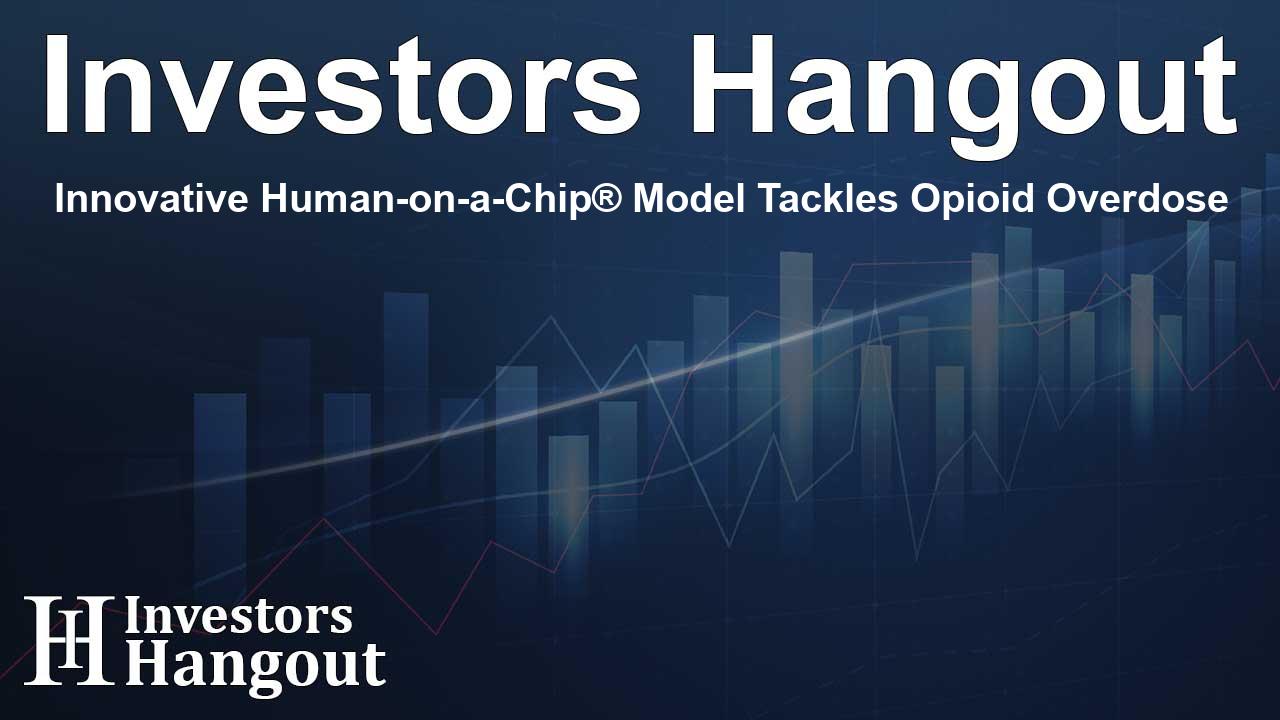Innovative Human-on-a-Chip® Model Tackles Opioid Overdose

Revolutionizing Opioid Overdose Recovery Research
In a significant advancement for medical research, Hesperos, Inc. has teamed up with the University of Central Florida (UCF) to develop a groundbreaking human-on-a-chip platform. This innovative multi-organ microphysiological model focuses on acute opioid overdose and the recovery process, offering researchers a unique tool to address the persistent opioid crisis affecting communities.
Understanding the Human-on-a-Chip® Model
The newly developed model leverages human cell-based systems to simulate opioid overdose instances and the subsequent recovery. By mirroring the physiological responses of various organs, the platform enables thorough examination of recovery agents, their efficacy, and potential toxic effects. Researchers can now study the dynamic interplay between the recovery agent and human organ systems more closely, paving the way for improved treatment strategies.
Exploring the Effects of Naloxone
The study on this multi-organ model highlights the role of naloxone, the most commonly used reversal agent in opioid overdoses. Although naloxone saves lives, it is essential to investigate its side effects, particularly for individuals with pre-existing heart conditions. The model demonstrated that while naloxone effectively restores breathing activity by reactivating the preBötzinger complex (preBötC), it might also introduce cardiac complications. Understanding these nuances is critical for developing safer overdose treatments.
The Significance of Cardiac Function Monitoring
Within the proposed model, cardiac tissue plays a pivotal role as researchers assess both heart muscle contraction and electrical activity. By establishing a connection between naloxone's effects on breathing and its impact on heart health, this innovative model addresses a significant gap in existing opioid overdose research. Ensuring that recovery agents are effective while maintaining heart function is crucial for overall patient safety.
The Urgency of Addressing Opioid Overdose
According to data from health authorities, drug abuse continues to pose a substantial public health challenge. With over 80,000 deaths linked to opioid overdoses, there is an urgent need for solutions that are not only effective but also safe for patients. Through the use of the acute opioid overdose and recovery (AOOR) model, researchers can explore new avenues for recovery agents beyond naloxone, potentially leading to the discovery of more effective therapeutic options.
Insights From Leading Researchers
James J. Hickman, PhD, who serves as the Chief Scientist at Hesperos and a faculty member at UCF, emphasized the model's transformative potential. He stated, "Our multi-organ model provides a tool for better understanding opioid overdose and the potential toxicity of recovery agents. By replicating human physiological responses, we aim to provide clinically relevant insights into potential treatments.” This commitment to advancing medical treatment aligns closely with ongoing initiatives to combat the opioid crisis.
Collaborative Efforts in Opioid Research
This research initiative builds on previous collaborative efforts between Hesperos and UCF. They have undertaken numerous projects supported by the National Institutes of Health HEAL initiative, focusing on a holistic and multi-faceted approach to opioid overdose and recovery challenges. Such collaborations are vital for fostering innovation and enhancing understanding of complex biological responses.
Looking Ahead: Advancements in Drug Development
The insights gained through the Human-on-a-Chip model will likely influence future drug development strategies. By advancing our understanding of how recovery agents work at a cellular level, researchers can better tailor treatments that minimize risks while maximizing patient outcomes. This research holds promise for transforming the landscape of opioid overdose interventions.
Frequently Asked Questions
What is the Human-on-a-Chip® platform?
The Human-on-a-Chip platform developed by Hesperos integrates multiple human organ systems to create an interconnected model that mimics human biology for research purposes.
How does the multi-organ model help in opioid overdose research?
This model mimics the effects of opioid overdose and recovery, allowing researchers to study the efficacy and toxicity of recovery agents like naloxone on various organ systems.
Who collaborated on this research?
Hesperos, Inc. partnered with researchers from the University of Central Florida (UCF) to develop this innovative research tool.
What role does naloxone play in the study?
Naloxone is a key recovery agent being evaluated in the model for its effects on reversing overdose alongside potential side effects, especially relating to heart function.
Why is addressing opioid overdose important?
With tens of thousands of deaths attributed to opioid overdose, developing effective and safe treatment options is crucial for public health and safety.
About Investors Hangout
Investors Hangout is a leading online stock forum for financial discussion and learning, offering a wide range of free tools and resources. It draws in traders of all levels, who exchange market knowledge, investigate trading tactics, and keep an eye on industry developments in real time. Featuring financial articles, stock message boards, quotes, charts, company profiles, and live news updates. Through cooperative learning and a wealth of informational resources, it helps users from novices creating their first portfolios to experts honing their techniques. Join Investors Hangout today: https://investorshangout.com/
Disclaimer: The content of this article is solely for general informational purposes only; it does not represent legal, financial, or investment advice. Investors Hangout does not offer financial advice; the author is not a licensed financial advisor. Consult a qualified advisor before making any financial or investment decisions based on this article. The author's interpretation of publicly available data presented here; as a result, they should not be taken as advice to purchase, sell, or hold any securities mentioned or any other investments. If any of the material offered here is inaccurate, please contact us for corrections.